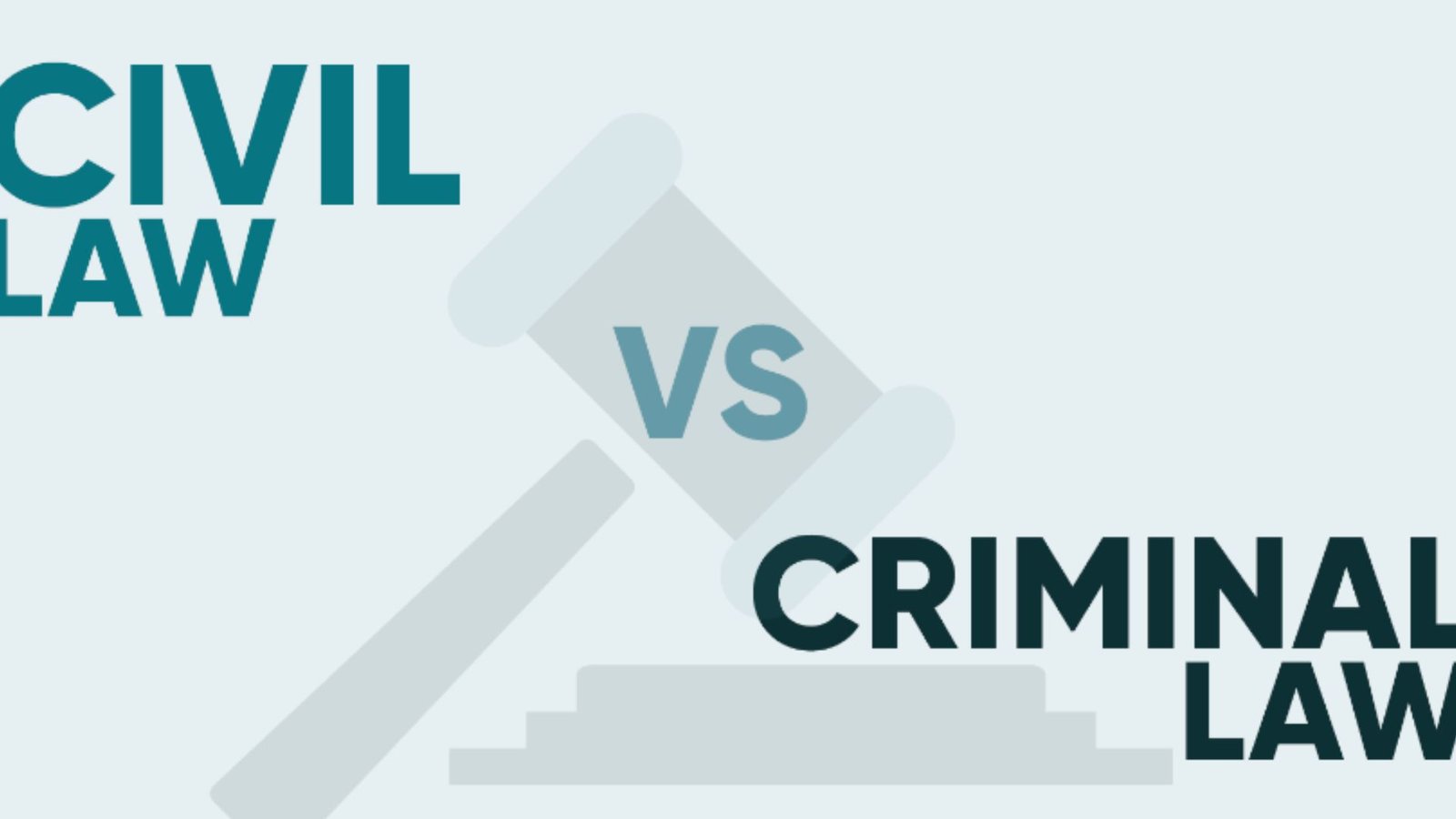When navigating the legal system, it’s important to understand the distinction between civil and criminal cases. While both involve legal disputes and courts, they differ significantly in their nature, purpose, and processes. Here’s a detailed overview of the key differences:

Nature of the Case
Civil Cases
Civil cases involve disputes between private parties, such as individuals, organizations, or businesses. These disputes typically center around issues such as contracts, property, family matters, or personal injury. The goal in a civil case is to resolve a dispute and provide compensation or specific performance rather than punishment.
Criminal Cases
Criminal cases, on the other hand, are brought by the government against individuals or entities accused of committing a crime. Crimes are offenses against the state or society at large, such as theft, assault, or murder. The purpose of a criminal case is to punish the offender, deter future crimes, and protect public safety.
Parties Involved
Civil Cases
In civil cases, the party initiating the lawsuit is called the plaintiff, while the party being sued is known as the defendant. The plaintiff seeks compensation or relief from the court for grievances or damages caused by the defendant’s actions.
Criminal Cases
In criminal cases, the case is brought by the government or state, represented by a prosecutor or district attorney. The accused individual or entity is referred to as the defendant. The prosecutor represents the interests of the state and aims to prove the defendant’s guilt beyond a reasonable doubt.
Burden of Proof
Civil Cases
In civil cases, the burden of proof is on the plaintiff, who must prove their case by a “preponderance of the evidence.” This means that the plaintiff must show that their version of events is more likely true than not, which is a lower standard of proof compared to criminal cases.
Criminal Cases
In criminal cases, the burden of proof rests with the prosecution. The standard is “beyond a reasonable doubt,” which is a higher threshold. The prosecution must prove the defendant’s guilt to such an extent that there is no reasonable doubt in the minds of the judge or jury.
Potential Outcomes
Civil Cases
In civil cases, the outcomes typically involve monetary damages, restitution, or specific performance. The court may order the defendant to pay compensation for the plaintiff’s losses or to fulfill a contractual obligation. Civil cases do not result in jail time or criminal penalties.
Criminal Cases
Criminal cases can result in various penalties, including fines, probation, community service, or imprisonment. The court may impose a sentence based on the severity of the crime and the defendant’s criminal history. In serious cases, the defendant may face significant prison time or other severe consequences.
Legal Procedures
Civil Cases
The procedures in civil cases often involve the filing of a complaint, discovery, settlement negotiations, and a trial. Civil cases may also involve motions and appeals, but the focus is on resolving disputes and awarding damages or relief.
Criminal Cases
Criminal cases involve arrest, arraignment, preliminary hearings, and potentially a trial. Defendants have rights such as the right to remain silent and the right to a public defender if they cannot afford an attorney. Criminal cases also include sentencing phases and possible appeals if the conviction is challenged.
Example Cases
Civil Cases
Examples include a lawsuit for breach of contract, a personal injury claim after a car accident, or a divorce case involving property division and custody issues.
Criminal Cases
Examples include a prosecution for burglary, a trial for assault, or a case involving drug trafficking charges.
Conclusion
Understanding the differences between civil and criminal cases is crucial for navigating the legal system effectively. Civil cases focus on resolving disputes and providing compensation, while criminal cases address offenses against society and involve penalties such as fines or imprisonment. Each type of case follows distinct procedures and standards of proof, reflecting their different purposes and impacts on the parties involved.










